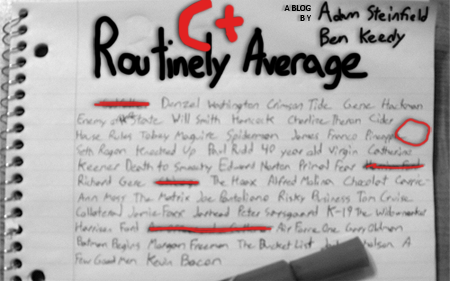 When the legendary Sean Connery announced his first retirement from the role of the world's most famous secret agent, James Bond 007, producers Albert Broccoli and Harry Saltzman faced the daunting task of finding another actor to fill his shoes in the sixth installment of the series On Her Majesty’s Secret Service. A worldwide search settled on the then-29-year-old Australian model George Lazenby. Because Connery and Bond were fused together in the minds of cinemagoers, they were skeptical that anyone else could play 007– just as, for instance, we cannot think of anyone but Harrison Ford as Indiana Jones. For this reason, On Her Majesty’s Secret Service was initially under-valued and neglected. However, time has been kind to this excellent film, and today it is considered, in many circles, the best in the franchise.
When the legendary Sean Connery announced his first retirement from the role of the world's most famous secret agent, James Bond 007, producers Albert Broccoli and Harry Saltzman faced the daunting task of finding another actor to fill his shoes in the sixth installment of the series On Her Majesty’s Secret Service. A worldwide search settled on the then-29-year-old Australian model George Lazenby. Because Connery and Bond were fused together in the minds of cinemagoers, they were skeptical that anyone else could play 007– just as, for instance, we cannot think of anyone but Harrison Ford as Indiana Jones. For this reason, On Her Majesty’s Secret Service was initially under-valued and neglected. However, time has been kind to this excellent film, and today it is considered, in many circles, the best in the franchise. Nevertheless, the action sequences have all the ingredients one has come to expect from a Bond movie. The fight scenes are stylized and extremely physical, employing jump cuts and loud sound effects to accelerate the tempo and make the violence seem more real than it actually is. The ski chase down Piz Gloria is electrifying. Bond launches himself down the slope and heavily armed assassins give chase. What is great about this is the way the chase just will not end. Upon reaching the village, 007 knocks two gunmen out in a brutal fistfight. But the hunt does not stop here, it just turns into a car chase. A break follows, then the pursuit is renewed on skis. The end of this exciting sequence sets up the climax of the film. The explosive final assault on the mountain-top building is equally spectacular - director Christopher Nolan pays homage to the scene in his blockbuster hit Inception and he has acknowledged that On Her Majesty's Secret Service has immensely influenced his work.
As for George Lazenby’s performance, it is fairly adequate considering this is his first film role. His Bond is not as cocky and as suave as Sean Connery's, but he is more physical and more psychologically complete. Unfortunately, Lazenby would not get to grow into the role since this would be his only portrayal of the British spy. But contrary to popular belief, he was not fired by the producers; it was his agent, Ronan O'Rahilly, who talked him into refusing a lucrative seven-film contract on grounds that the series would die out in the 1970s.
28/30







